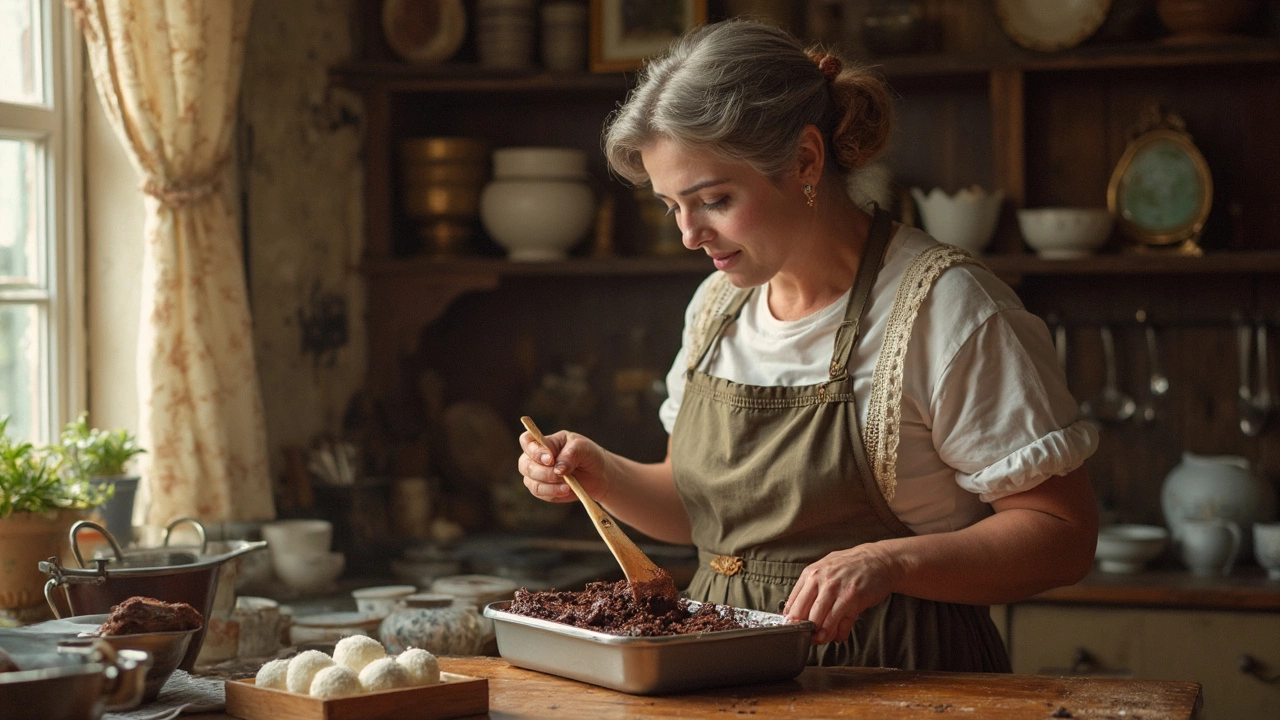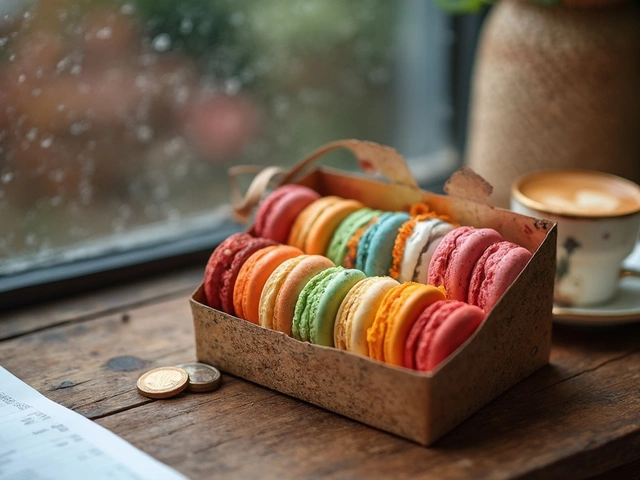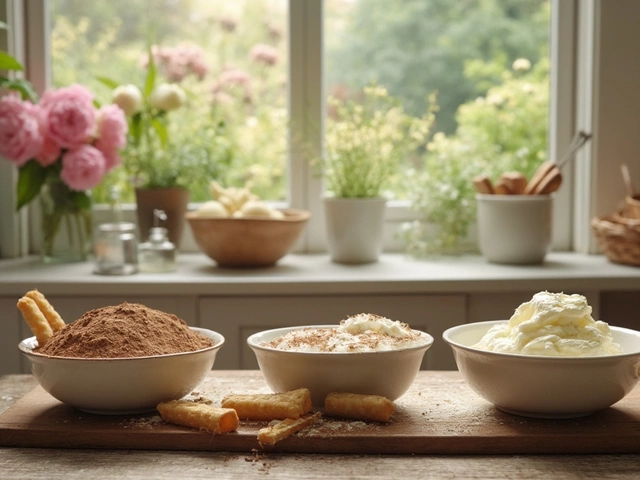
If your fudge keeps turning out gritty or stiff, chances are you’re not stirring it at the right times—or maybe you’re stirring at the wrong ones. Stirring fudge isn’t just a mindless step. Believe it or not, stirring too early or too much can ruin the whole batch.
Here’s the deal: when you first heat all your fudge ingredients together—sugar, butter, milk—keep your spoon away unless the recipe says otherwise. At this stage, you want everything to dissolve gently, and stirring can cause big sugar crystals that wreck the texture. Wait until the fudge comes off the heat and cools down to around 110°F (about body temperature) before stirring or beating it. That’s the game-changer for silky fudge.
If you’re new to fudge making, a thermometer is your best friend. Getting impatient and stirring out of habit is one of the biggest mistakes. Stick around—these tips and facts will save your next fudge batch from being just another kitchen fail.
- Why Stirring Matters
- When to Stir and When to Stop
- Common Stirring Mistakes
- Pro Tips for Perfect Fudge
Why Stirring Matters
Getting the stirring part right is what separates fudge that’s smooth and creamy from fudge that’s just a brick of sugar. It’s not about keeping busy; it’s all about timing. Sugar in the fudge mixture is picky—if you mess up when you stir fudge, you mess up how those sugar crystals form, and that’s the gateway to either heaven or a grainy disaster.
When you toss the ingredients in the pot, you want all the sugar to dissolve without any crystals forming on the side of the pan. Stirring at the wrong moment (especially before the mix cools) makes the whole thing seize up. That’s because moving the mixture too soon gives sugar crystals an excuse to latch onto each other, making the finished piece gritty instead of melt-in-your-mouth soft.
"Stirring fudge too early, or too often, can turn the entire batch gritty. It's all about letting the sugar cool undisturbed, so crystals set up smooth and fine." — The Joy of Cooking, 2019 edition
Here’s an eye-opener: the size of sugar crystals decides your fudge fate. Fine, teeny-tiny crystals mean your fudge feels creamy. Clumpy, big ones turn it crunchy and dry. Most pros swear by leaving the hot fudge mixture to cool to just above 110°F before even thinking about giving it a beat or stir.
| Result | Crystals Formed | Stirring Habit |
|---|---|---|
| Smooth & Creamy | Tiny, even | Waited to cool, then stirred |
| Grainy & Gritty | Large, irregular | Stirred while still hot |
If you ever see a crust of sugar around the edge of your pot, that’s your cue to be extra careful. Any stray grains can start a perfect storm of crystallization and ruin the batch. A damp brush down the sides while the fudge cooks can help keep those crystals away. The bottom line: fudge is more about patience than muscle.
When to Stir and When to Stop
So when should you actually pick up that spoon? At first, it feels weird not to stir when the pot is full of bubbling sugar and butter. But hold off. While heating, don’t stir at all once your sugar’s dissolved and everything is mixed in. Stirring from this stage sparks big, stubborn sugar crystals that make grainy fudge.
Here’s what you do instead:
- After combining ingredients: Stir gently just until everything is melted and blended smooth. Once combined, just let it boil without touching it.
- While boiling: Don’t stir at all. Any poking around now can wreck your fudge’s texture.
- After boiling: Take the pot off the heat and let it cool—this is where patience pays off. Wait until it cools to about 110°F (43°C). This usually takes 15-20 minutes, depending on your kitchen.
- When at 110°F: Now (and only now!), start stirring or beating the fudge. This is key for that creamy finish. Stir until it thickens and loses its gloss, which can take anywhere from 5 to 10 minutes.
- Once the fudge changes texture and looks matt, stop stirring and pour it right away into your prepared pan.
It’s tempting to keep stirring for longer, thinking it’ll get even smoother. Don’t. Over-stirring after the shine is gone will actually make fudge far too thick and almost impossible to spread.
Here’s a simple guide to help with timing:
| Stage | Stir? | Why |
|---|---|---|
| Initial Mixing | Yes, lightly | Make sure sugar dissolves evenly |
| Boiling | No | Prevents sugar crystals forming |
| Cooling to 110°F | No | Keeps sugar structure right |
| Beating at 110°F | Yes | Brings out that creamy texture |
| Once Lose Gloss | No | Prevents toughness |
The most important thing with making fudge is to trust the process. That’s why nailing the stir fudge timing makes or breaks your batch. Those professional-looking squares you see online? They’re all about waiting for the right moment, then working quick.

Common Stirring Mistakes
It’s wild how the tiniest misstep in stirring can turn your fudge dreams into a crumbly disaster. Let’s talk straight about what usually goes wrong and how to avoid it.
- Stirring fudge while it’s boiling – This is the quickest way to set yourself up for gritty fudge. Sugar crystals form when you agitate the mixture before it’s reached the right temperature, and once those crystals start, there’s no going back.
- Stirring after pouring – Pouring your cooked fudge into the pan means it’s done. Don’t go in with a spoon trying to make it “even out” or fix bumps. Stirring now will not make it creamier; it just messes with the texture and cools it unevenly.
- Skimping on the beat – Once it cools to about 110°F, this is the only time you need to stir it with some muscle. Not beating it enough at this stage leaves the fudge runny, not fudgy. You want it to lose that glossy look and thicken up. If your arm hurts a little at the end, you’re probably doing it right.
- Using the wrong spoon – Metal spoons can scrape the sides of your pot, knocking crystals back into the batch. A sturdy wooden spoon or a silicone spatula is way better, especially when you get to the beating phase.
One more thing: scraping the sides of the pot while pouring might seem like a good idea, but those bits on the edge usually cool faster and can be grainy. It’s totally fine to leave them behind instead of mixing them in and ruining the texture.
Dialing in when and how you stir makes all the difference. One change in your timing or tool can be the secret to the best fudge you’ve ever made.
Pro Tips for Perfect Fudge
Let’s cut straight to what actually works. Seriously good fudge depends on a few simple habits, and a little kitchen know-how goes a long way. Don’t worry—nothing is too technical here, just things that’ll step up your fudge every time.
- Check the temperature every time. Use a candy thermometer. You want your mix to hit 234°F (112°C) before taking it off the stove. This is the soft ball stage, and getting it wrong makes all the difference between gooey fudge and sweet bricks.
- After boiling, stop stirring—put the spoon down and walk away. Do not stir while it cools. This control stops big sugar crystals from forming.
- Wait until your syrup is 110°F (43°C) before you start stirring or beating again. Rushing will make the fudge grainy. Most kitchen fails happen because someone can’t wait and starts beating while it’s still way too hot.
- Be fast but thorough during the final beating. Keep going until the gloss disappears and you see the mixture begin to thicken. Don’t linger too long—overbeating can turn creamy fudge dry.
- Line your pan with parchment paper or foil, so you don’t have to dig fudge out with a jackhammer. Lift it out once it’s cool for easy, neat slices.
Here are a few speed bumps you can avoid altogether:
- Humidity makes fudge tricky—high moisture means your (even if you do everything right) fudge just won’t set as well. Best to wait for a dry day.
- Cheap butter and low-quality chocolate sometimes leave fudge greasy or dull. For the real deal, splash out a little.
| Step | Ideal Temp | Action | What to Avoid |
|---|---|---|---|
| Cooking | 234°F (112°C) | Don't stir, use a thermometer | Guessing by eye |
| Cooling | 110°F (43°C) | Hands off until cool | Stirring too soon |
| Beating | After cooling | Stir until thick & matte | Overbeating |
And here’s the deal: don’t swap stir fudge directions for shortcuts on TikTok or Insta unless you’ve seen real comments from people who aren’t just faking it for views. Classic fudge steps stick around for a reason—and they save your sugar from heartbreak.












Write a comment